by Carla Tozzi
When we talk about the Eternal City, we cannot help but think of the legacy of the Roman Empire, the archaeological sites and ancient monuments, the history of the Church and its architectural and artistic heritage. This is what many Rome guides focus on when presenting the city to tourists. But Rome is not just that.
The English writer John Heywood wrote: “Rome wasn’t built in a day, but they were laying bricks by the hour”. A phrase that became a proverb (and the title of a hit song by the pop group Morcheeba).
Rome is 2776 years old, and we can think of it as the result of a stratification of history that in recent decades has seen new cultural realities of great importance flourish, such as foundations,, art and design galleries, and museums. Amidst the signs of the past, new designs and contemporary architecture are emerging, but without losing the unmistakable trait of Romanity. Rome was not built in a day, and for certain was not built to be Milan.
That is why we created this Domus guide to Rome: to look at an ancient, even eternal city with new eyes. We take you to the Italian capital city, following an itinerary that allows you to discover its modern architecture and contemporary art and design treasures in more or less 48 hours, with all the places and institutions that you can't miss.
Three must-see museums: MAXXI, MACRO and GNAM

 View gallery
View gallery

MAXXI, Museo Nazionale delle Arti del XXI Secolo, Rome, Italy, 2009
Photo Flavio Ianniello/MUSA. Courtesy Fondazione MAXXI

MAXXI, Museo Nazionale delle Arti del XXI Secolo, Rome, Italy, 2009
Photo Francesco Radino. Courtesy Fondazione MAXXI

MAXXI, Museo Nazionale delle Arti del XXI Secolo, Rome, Italy, 2009
Photo Francesco Radino. Courtesy Fondazione MAXXI

MAXXI, Museo Nazionale delle Arti del XXI Secolo, Rome, Italy, 2009
Photo Guido Caltabiano. Courtesy Fondazione MAXXI

MAXXI, Museo Nazionale delle Arti del XXI Secolo, Rome, Italy, 2009
Photo Francesco Radino. Courtesy Fondazione MAXXI

MAXXI, Museo Nazionale delle Arti del XXI Secolo, Rome, Italy, 2009
Photo Francesco Radino. Courtesy Fondazione MAXXI

MAXXI, Museo Nazionale delle Arti del XXI Secolo, Rome, Italy, 2009
Photo Francesco Radino. Courtesy Fondazione MAXXI

MAXXI, Museo Nazionale delle Arti del XXI Secolo, Rome, Italy, 2009
Photo Riccardo Musacchio/MUSA. Courtesy Fondazione MAXXI

MAXXI, Museo Nazionale delle Arti del XXI Secolo, Rome, Italy, 2009
Photo Flavio Ianniello/MUSA. Courtesy Fondazione MAXXI

MAXXI, Museo Nazionale delle Arti del XXI Secolo, Rome, Italy, 2009
Photo Francesco Radino. Courtesy Fondazione MAXXI

MAXXI, Museo Nazionale delle Arti del XXI Secolo, Rome, Italy, 2009
Photo Francesco Radino. Courtesy Fondazione MAXXI

MAXXI, Museo Nazionale delle Arti del XXI Secolo, Rome, Italy, 2009
Photo Guido Caltabiano. Courtesy Fondazione MAXXI

MAXXI, Museo Nazionale delle Arti del XXI Secolo, Rome, Italy, 2009
Photo Francesco Radino. Courtesy Fondazione MAXXI

MAXXI, Museo Nazionale delle Arti del XXI Secolo, Rome, Italy, 2009
Photo Francesco Radino. Courtesy Fondazione MAXXI

MAXXI, Museo Nazionale delle Arti del XXI Secolo, Rome, Italy, 2009
Photo Francesco Radino. Courtesy Fondazione MAXXI

MAXXI, Museo Nazionale delle Arti del XXI Secolo, Rome, Italy, 2009
Photo Riccardo Musacchio/MUSA. Courtesy Fondazione MAXXI
The itinerary begins with three of Rome's most important contemporary art institutions. Not far from Renzo Piano's Auditorium Parco della Musica you will find MAXXI, the National Museum of 21st Century Arts, designed by Zaha Hadid. An icon of modern design, it features permanent collections and temporary exhibitions by international artists and architects. A few steps away, and also run by MAXXI, you can visit the house museum of Giacomo Balla by appointment, to discover the domestic dimension of the life of a futurist artist.

Another not-to-be-missed stop is the National Gallery of Modern Art, which contains an outstanding collection of art that extends from Neoclassicism to present-day works, designed to facilitate discussions across diverse historical timelines. Finally, in the Nomentano district, the former Peroni factory expanded with a new wing designed by Odile Decq has been home since 2004 to MACRO, a museum that explores the potential of contemporary art through the contributions of Italian and international artists.
Suggested min. visit time for each of the spaces 2 hours.
The jaw-dropping Quartiere Coppedè
As you leave GNAM, heading east, you will arrive at the Coppedè district: a complex of buildings designed in the 1920s by architect Gino Coppedè. A neighborhood where time seems to have stopped, in which the eclectic style comes from a combination of Art Nouveau, Gothic, Baroque and medieval elements.
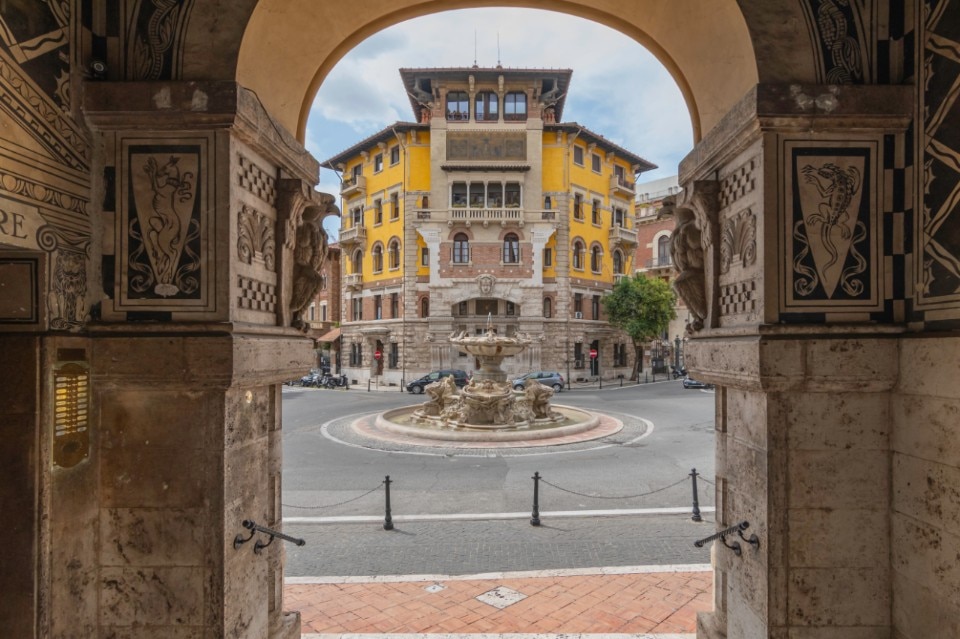
The Fountain of Frogs, placed in the center of Mincio Square, is one of the symbols of this place, along with the large arch with wrought-iron chandelier on Via Dora, which connects the Palazzi degli Ambasciatori, and the Villini delle Fate. Amid Latin inscriptions and decorations referencing zodiac signs, medieval literature, and the Catholic tradition, a walk through these streets can turn into a real treasure hunt (or to the most Instagrammable oddity).
Suggested min. visit time 1 hour.
Meet me at the cinema: the historic Troisi movie theatre in Trastevere
The Italian film industry was born in Rome, and there are many places that tell this story, such as Cinema Troisi, located in Trastevere inside the former Casa Gil designed by architect Luigi Moretti in the 1930s. Initially used for conferences by the Italian Youth, the hall became a parish cinema in the 1950s under the name Cinema Induno. Reopened a few years ago thanks to the “Piccolo America” association, it is now part of the Europa Cinemas network, and offers festivals aimed both at cinephiles and those who want to rediscover masterpieces of the history of filmmaking.
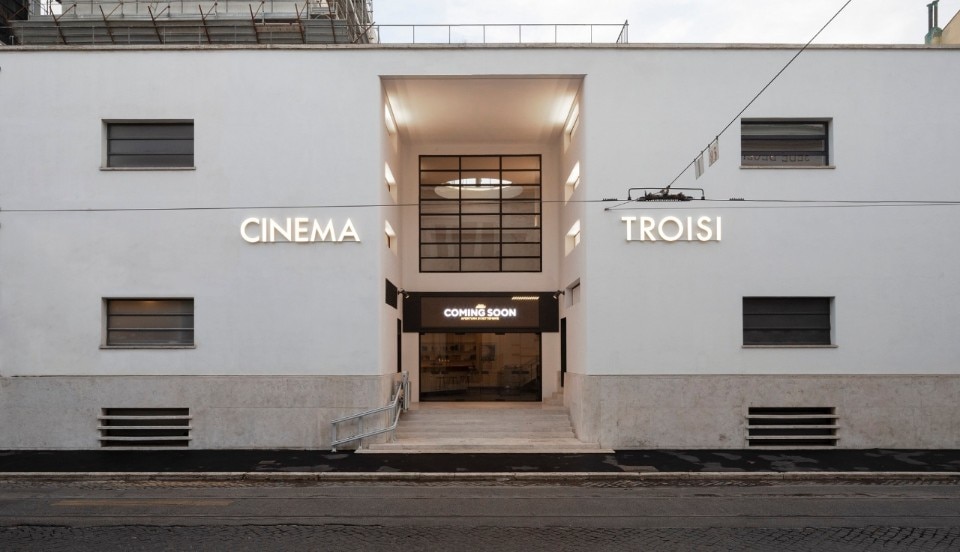
Trip to Mattatoio
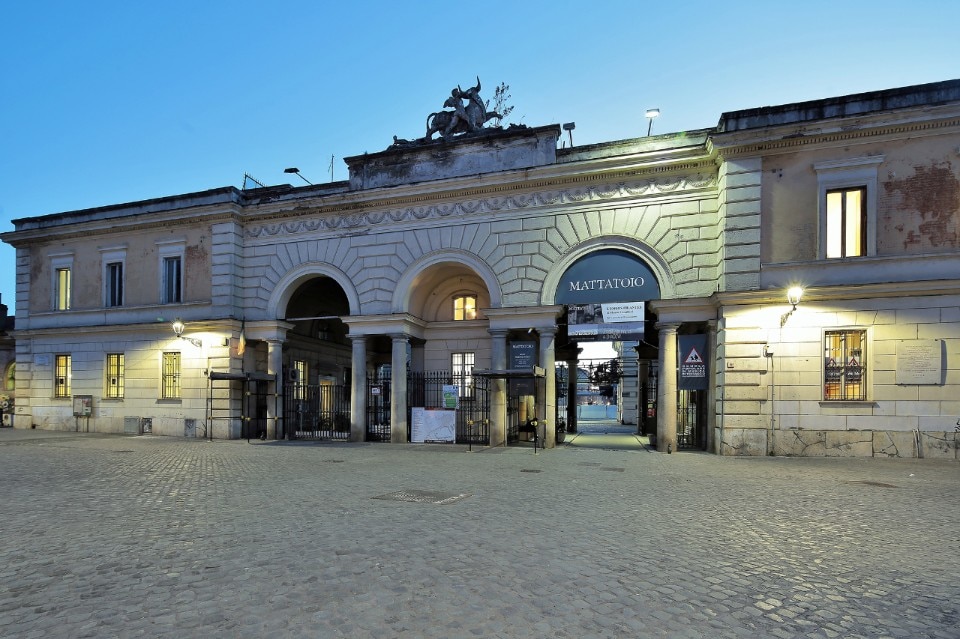
The second day in Rome begins from the heart of the Testaccio neighborhood, at the Mattatoio of Rome. Originally a public slaughterhouse, it has been transformed into an exhibition space that hosts exhibitions, installations, performances and workshops. Currently running and not to be missed is the temporary exhibition Tomaso Binga and María Ángeles Vila Tortosa. Corpus Naturæ and the music, dance, theater, and new technology events of the Romaeuropa Festival.
Suggested min. visit time 1 hour.
Archaeology and contemporary art at Forof
Forof is the contemporary art center founded by Giovanna Caruso Fendi in 2022, and is located in the historic Palazzo del Gallo in Roccagiovine, facing the Trajan Column and the Imperial Forums. The exhibition space preserves in the underground rooms the colored marbles of the flooring of the Basilica Ulpia and the remains of the eastern apse, dating back to the second century AD.
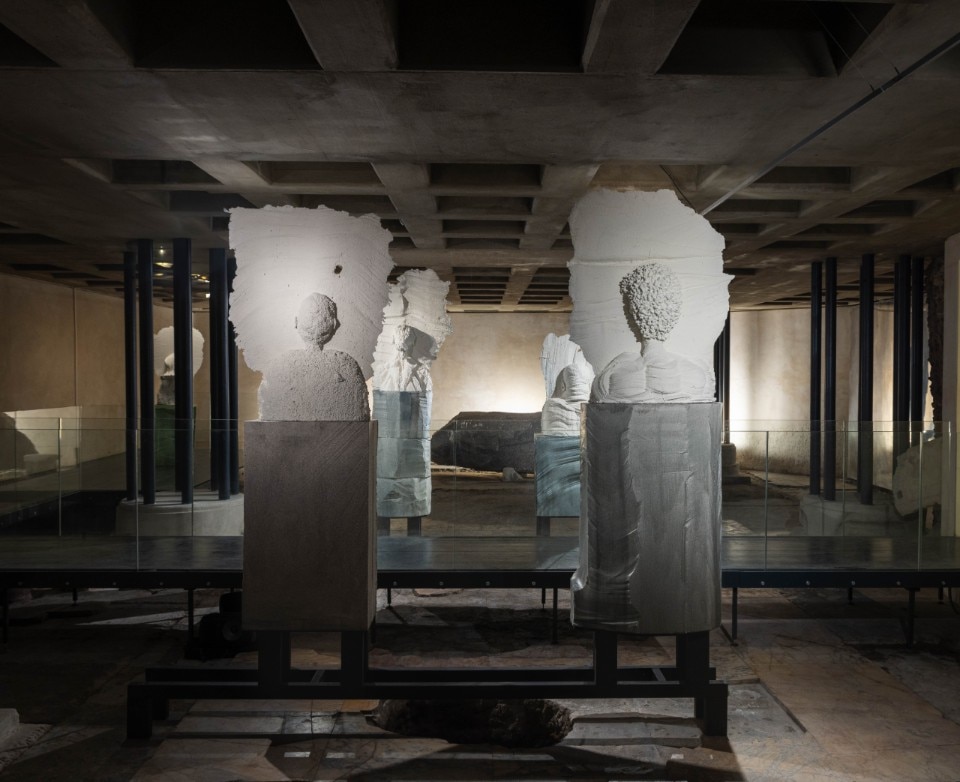
The solemnity of this location can only best accommodate an unprecedented, site-specific project, curated by Bartolomeo Pietromarchi, of the Viennese collective Gelitin/Gelatin, famous for its provocative works. Open to the public from October 2, 2024, it is among the exhibitions not to be missed this fall.
Suggested min. visit time 1 hour.
From Trastevere to Campo de' Fiori
Crossing Piazza Venezia and passing by the Altare della Patria, with Via del Corso running a long way to the right, we head in the direction of Campo de' Fiori. Just before, in the narrow Vicolo de' Catinari, a splendid Baroque fountain can be seen. Here is the Roman headquarters of the Lorcan O'Neill Gallery, an address to always keep in mind. On display is an exhibition featuring new work by British artist Rachel Whiteread.
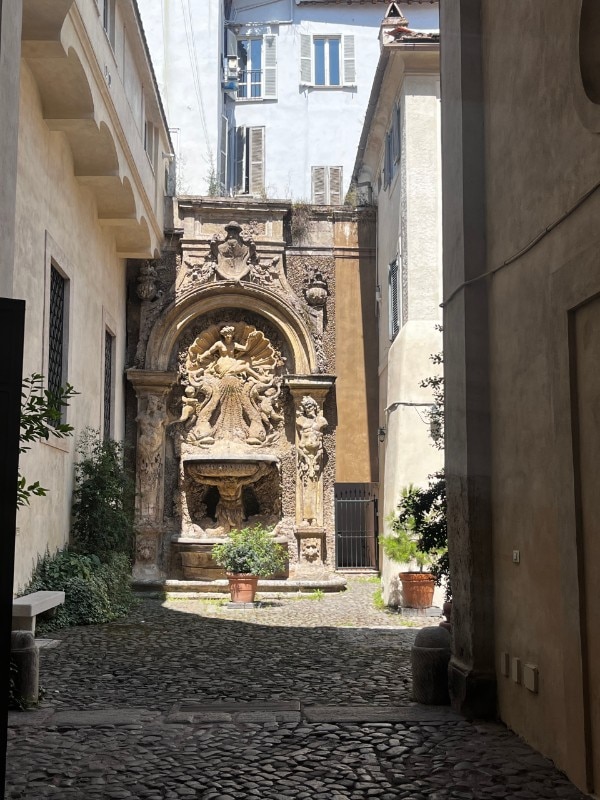
Wandering around Trastevere, you can visit the deconsecrated church of Sant'Andrea de Scaphis, originally from the 9th century, which now houses the magical space, by artist and art dealer Gavin Brown. Since 2015 it has welcomed some of the greatest contemporary artists, including Rirkrit Tiravanija, Joan Jonas, Arthur Jafa, and Jannis Kounellis. Ongoing exhibition of South American-born artist Jill Mulleady.
Suggested min. visit time for each of the exhibition spaces 30 minutes.
Contemporary art in Rome, foundations and galleries

Less than a ten-minute walk from Trastevere, in the Velabro area, is Palazzo Rhinoceros, home of the Alda Fendi Foundation-Experiments, headed by patron Alda Fendi. Opened in 2018, this “art palace” was restored to a design by French architect Jean Nouvel to make it a multifunctional luxury building, which in its six floors houses an exhibition gallery, a restaurant with a terrace, and twenty-five suites. On view until Nov. 30 is the futurBella exhibition, a tribute to Futurism and one of its most brilliant artists, Fortunato Depero.
To get to the Memmo Foundation, which would be the next stop on the itinerary, you walk quite a bit so you can stop and admire some of the city's landmarks. Walking down Via dei Chiavari, you come across Palazzo Massimo Alle Colonne, with its characteristic convex facade, a Renaissance masterpiece by architect Baldassarre Peruzzi. Proceeding along Corso del Rinascimento you reach Piazza Navona, and not far away is the church of San Luigi dei Francesi, which deserves an entrance to see Caravaggio's three canvases dedicated to the martyrdom of St. Matthew.
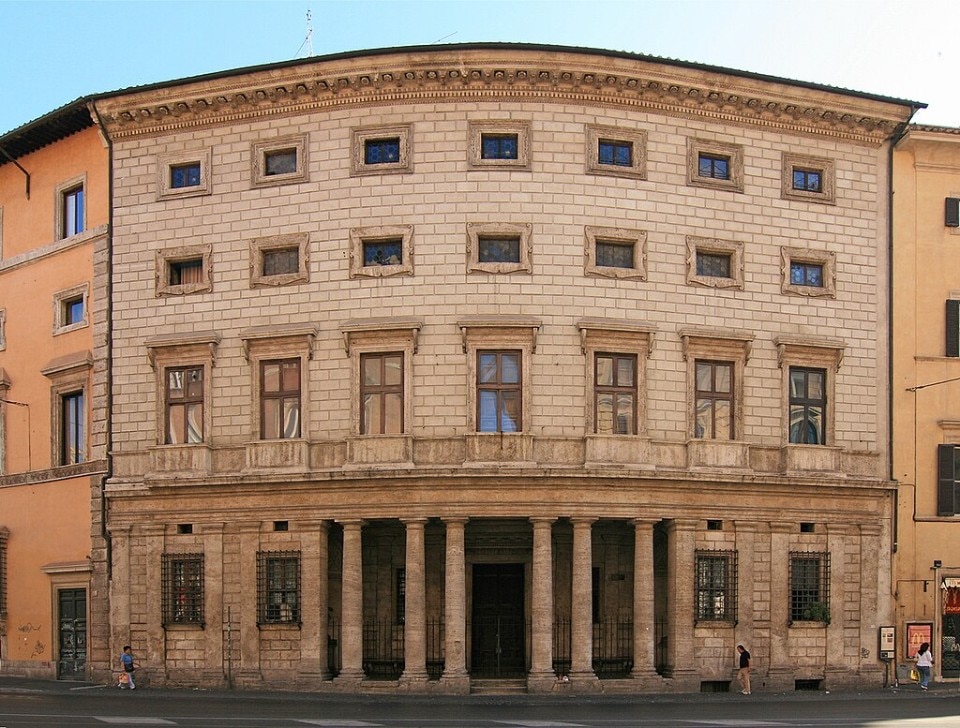
Moving further north, you arrive at the Memmo Foundation, a cultural institution that has been promoting contemporary art since 1990. Located in Palazzo Ruspoli, the foundation aims to create a dialogue between the city, artists, and the public by supporting innovative and experimental projects. Wynnie Mynerva. Presagio is the current exhibition through Nov. 3.
The last stop on the itinerary is reached by continuing to Piazza Di Spagna, and walking up the Spanish Steps to Trinità dei Monti to see Palazzo Zuccari, also known as the “house of monsters,” given the decidedly original decorations on the façade on Via Gregoriana, inspired by the Garden of Bomarzo.
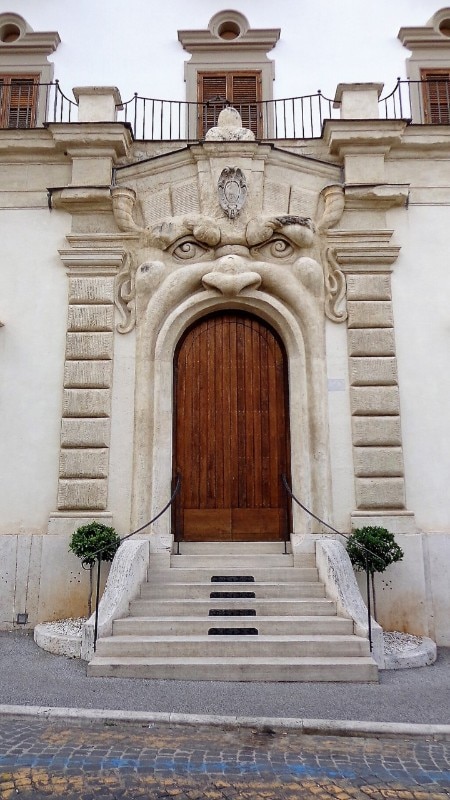
From here, getting to the last real point of arrival is, literally, all downhill. The Nicola Del Roscio Foundation is a nonprofit cultural project based in the heart of the capital that speaks to the city. On view through Oct. 18 is the exhibition Transcending Blue, featuring site-specific, and inspired by the life of Cy Twombly, works by American artist Barbara Crawford.
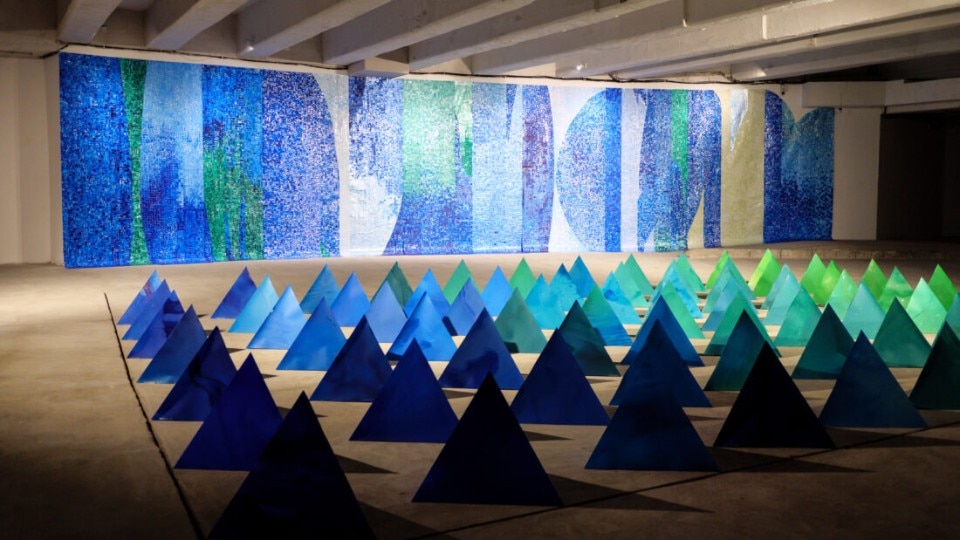
On the same street, the Gagosian Gallery has its Roman branch, where works by U.S. painter Helen Frankenthaler are currently on display in the exhibition Helen Frankenthaler: Painting on Paper, 1990-2002, in parallel with the exhibition recently opened at Palazzo Strozzi in Florence.
Suggested minimum visit time for each of the exhibition spaces 30 minutes.
Sweet dreams in Rome, stay at the Hotel Locarno
In the heart of Rome, not far from Piazza del Popolo is a hotel that is not just a place of hospitality, but a world apart, where time seems to have stopped in the 1920s, the Hotel Locarno. Over the course of about a hundred years, it has been the Roman home of many artists and thinkers: Federico Fellini and Giulietta Masina, Jack Kerouac and Gregory Corso, Jean Michel Basquiat, Jorge Luis Borges, Wes Anderson, and many others. The stunning art deco design and carefully preserved features create an enchanting atmosphere, where the walls seem to whisper countless fascinating tales—if only they had a voice!
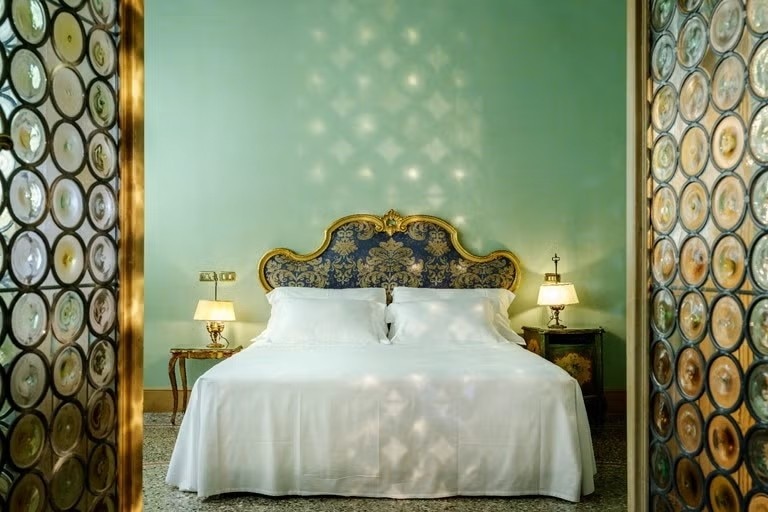
A venue not to be missed
When you come across a place like the Baronato Quattro Bellezze, you cannot help but be fascinated. A small venue not far from Castel Sant'Angelo that still speaks with the language of its founder Dominot, actor, mime, transformer, drag queen and transvestite, who was for many years among the protagonists of the Roman avant-garde. Opened in 1984, for some years now the artistic direction has been overseen by the Salò, a Roman performance project that rekindles the old fashioned magic of the Baronato every Tuesday.
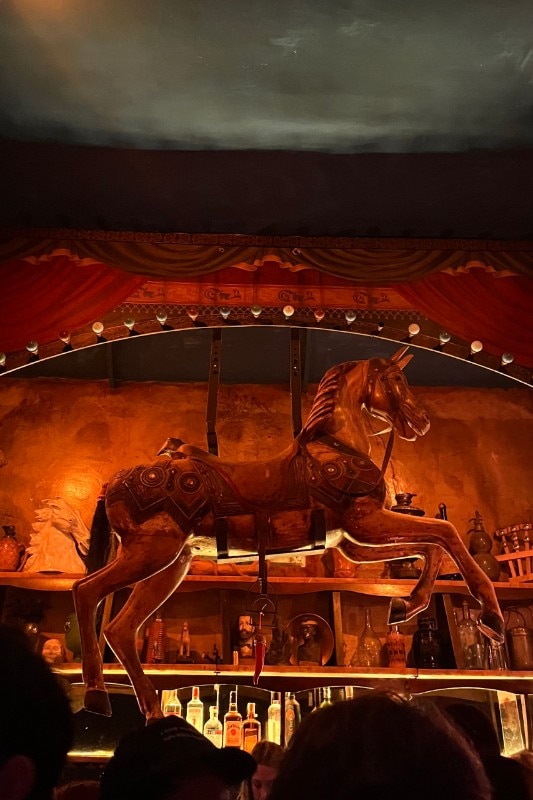
For those who still have time, it is worth devoting a half day to the less central areas of the capital that, since the last century, have welcomed architectural and urban interventions signed by big names in international architecture.
Among them, the church dedicated to God the Merciful Father in Tor Tre Teste is the work of architect Richard Meier. The project is the result of an international competition announced in view of the Jubilee of 2000 and is a perfect synthesis of the poetics of the American architect, who in Rome also oversaw the design of the Ara Pacis Museum. If you are looking for by-the-books examples of rationalist architecture, the EUR district with its monumental buildings, such as the Palazzo della Civiltà Italiana, is not to be missed. On the other side of the city, you can visit the Foro Italico, a sports citadel built between 1927 and 1933. This is also home to the Olympic Stadium, designed by Enrico Del Debbio and later Luigi Moretti, and renovated for the 1990 World Cup.
Suggested min. visit time for each of the spaces 2 hours.
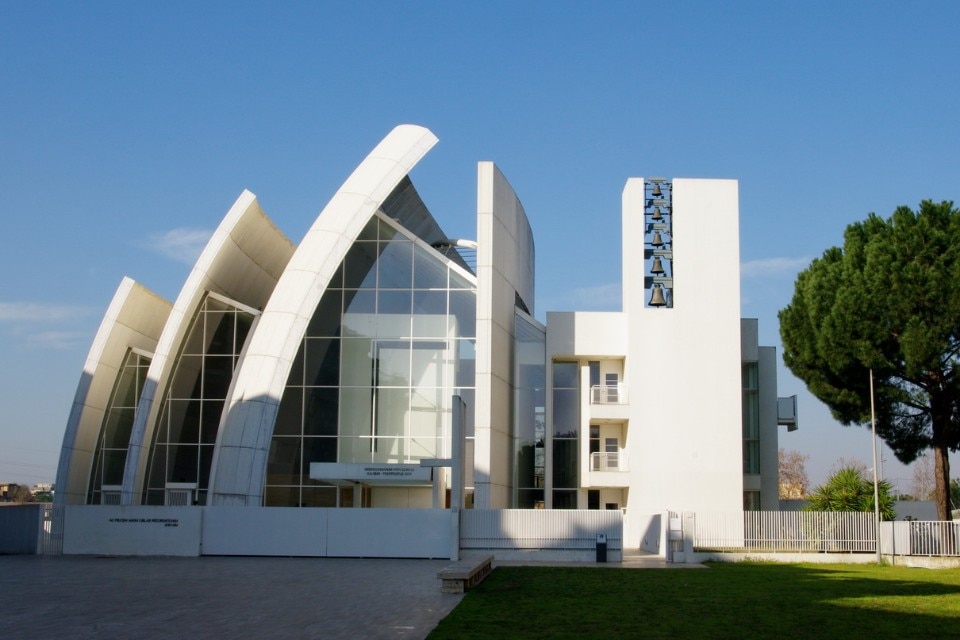
Rome covers an area of 1,285 km², which means that it's one of the largest cities in Europe. So how best to get around? Walking is a great way to discover new corners, with a few extra stops to enjoy Roman street food. The best alternative is undoubtedly to take advantage of bike and scooter sharing services, to travel longer distances without getting stuck in the traffic jam, while still enjoying the beauty of the city.



